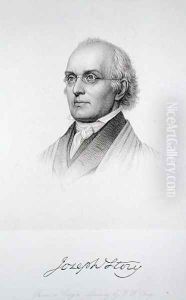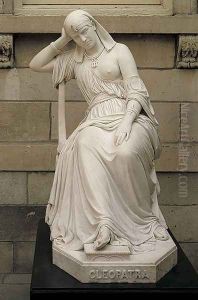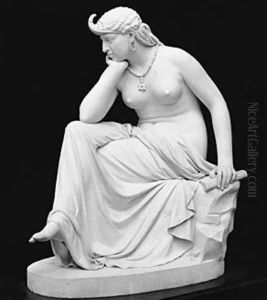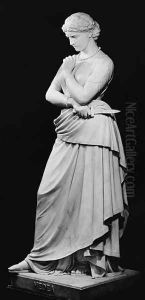William Wetmore Story Paintings
William Wetmore Story was an American sculptor, art critic, poet, and editor born on February 12, 1819, in Salem, Massachusetts. He was the son of the prominent jurist, Joseph Story, who served on the U.S. Supreme Court. Initially, Story did not set out to become an artist; he followed in his father's footsteps and pursued a career in law. He graduated from Harvard College in 1838 and then studied law at Harvard Law School. After completing his education, he practiced law in Boston.
Despite his legal career, Story's interest in the arts was apparent from an early age. His artistic talents began to overshadow his legal work, and he eventually turned his attention fully to sculpture. In 1847, he moved to Italy, which was a center for expatriate American artists and writers at the time. Settling in Rome, Story became part of a vibrant community of artists and was deeply influenced by the rich artistic heritage of the city.
Story quickly established himself as a notable sculptor, working primarily in marble. He was known for his neoclassical style, which was in vogue during the mid-19th century, and gained recognition for his works that often depicted historical and mythological subjects. Some of his most famous works include the statue of 'Cleopatra' and the 'Libyan Sibyl', which were exhibited and well-received at the 1863 World's Fair in London.
In addition to his sculptures, Story was a prolific writer and poet. He contributed articles to various periodicals and published several volumes of poetry, as well as a biography of his father. His literary work was well-regarded by his contemporaries, and he maintained friendships with notable figures of the time, including Robert Browning and Elizabeth Barrett Browning.
William Wetmore Story's influence spanned both the American and European art scenes. His works are housed in various collections and museums, and his legacy is that of a Renaissance man who bridged the gap between law and art, America and Europe. He continued to work and live in Rome until his death on October 7, 1895. Story's life and work remain a testament to the cultural exchange and artistic endeavors of American artists abroad during the 19th century.



